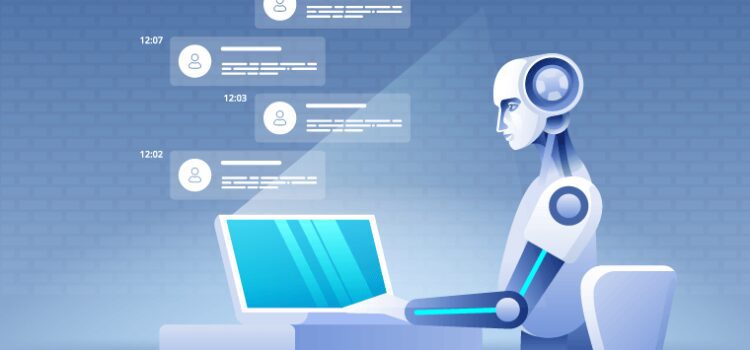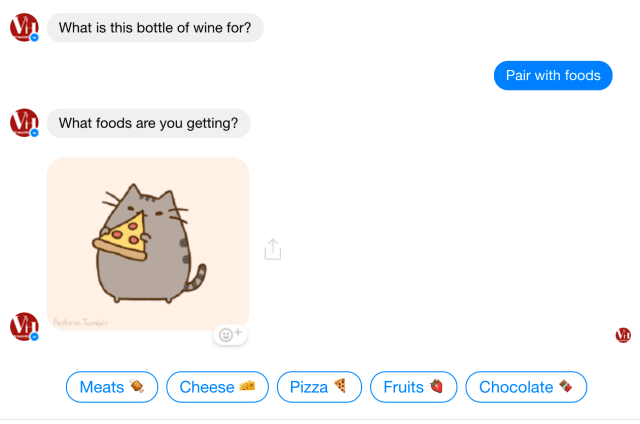Chatbots: Are they the future?

What’s the best way to take advantage of ChatBots?
The 4th industrial revolution is already upon us, and Artificial Intelligence (AI) is one of the fields at the forefront of this revolution. The impact of AI evangelism by renowned industry researchers and tech evangelists has caused a ripple effect in many industries. The word Artificial Intelligence is slowly making its way into the mainstream.
The way people understand AI differs. The understanding of an average person with poor knowledge of AI usually does not transcend beyond ‘so-they-said-robots-will-take-over-my-job-pretty-soon’; which in most case, is an absolute truth. However, I’m not here to discuss how AI will jeopardize your career, but rather to enlighten you on how to leverage on the power of AI through chatbots to automate your business and engage your customers effectively.
What is Artificial Intelligence?
Artificial Intelligence (AI) refers to the ability of information technology to perform tasks commonly associated with human reasoning such as visual perception, speech recognition, decision-making, translation between languages, and much more. It’s pretty much a unique area of computer science that involves the creation of intelligent machines that work and reacts like humans.
So What Exactly Is A Chatbot?
A chatbot is an interactive artificial intelligence (AI) software that’s capable of simulating human conversation through predetermined phrases and auditory or text-based signals. This interactive AI software can be conveniently embedded and used through any messaging applications, websites, mobile apps, or telephone. Some examples of chatbot technology are virtual assistants like Amazon’s Alexa, Google Assistant, Windows’ Cortana, Apple’s Siri, and messaging apps, such as Telegram bot, Twitter bot, and Facebook bot.
Chatbots can converse with humans and also perform a wide variety of functions based on user commands, but its capabilities are limited. However, when it comes to customer service and marketing in business activities, chatbots have an advantage over humans in some instances such as:
- Availability to provide support to customers 24/7
- Access to a vast array of information and functionality
- Speed and accuracy in a narrow domain.
In a situation whereby a customer’s query and request exceeds the ability of a chatbot, the customer’s complaint will then be transferred to customer care representatives of a company.
Why It Is Very Important To Integrate Chatbots In Your Business
- Opportunity to Reach More Customers: Chatbots throw a door of endless possibilities to businesses, in the sense that it helps businesses to reach their respective target markets directly in real time.
- Personalized Support: Chatbots avails businesses the liberty to deliver services in a highly customized manner where the message, operations, and human support can be combined in one experience.
- Streamline and Unlock Customer’s Interest: Chatbot applications streamline interactions between people and services, enhancing the customer experience.
- Reduces Cost & Increases B2C Engagement: Chatbots offer companies new opportunities to improve their customer engagement process and operational efficiency by reducing the typical cost of customer service.
What’s the Ideal Chatbot for My Business?
There are different types of chatbots as well as the tools and applications used in building one. It boils down to what features you’d want the chatbot to possess and its specific performance. For example:
Business A: A fast food restaurant whose chatbot helps customers place an order

Business B: A wine shop owner whose chatbot allows customers to determine what wine to pair with their dinner.

Both Business A and Business B owners would most likely need a scripted chatbot instead of an elaborate chatbot with AI capabilities that’s rival to IBM’s Watson. The fast-food restaurant chatbot makes use of keyword recognition while the wine store chatbot uses clickable menu buttons.
On deciding the best chatbot that’s right for your business, put yourself in the shoes of your customers and imagine the value you’d want to receive. Is conversation context going to impact this value significantly? If not, then you do not need to waste your time in developing such type of chatbot. Another vital thing to consider is the UX/UI preference of your audience – this is because some users may prefer a chatbot to guide them with visual menu buttons rather than an open-ended experience where they’re required to ask the chatbot questions directly. This more reason why you need to test your chatbot before it goes live.
Types of Chatbots
There are lots of ways to classify and differentiate chatbots. There are currently two types of chatbots, and they are:
- Specialist chatbots: These bots are explicitly built to achieve a particular purpose and can only accept specific inputs. These are the kind of chatbots that follow a conversation flow defined by the programmer. The chatbot does not and cannot go beyond this scope, meaning a user cannot get an answer to questions which the programmer didn’t include in the database. The fast-food restaurant and wine shop chatbot are categorized under specialist chatbot.
Specialist Chatbot can further be divided into three subcategories, which are:
- Keyword Recognition Bot
- Text Button/Menu Bot
- A mix of both ‘a’ & ‘b’
- Intelligent chatbots: These bots are built to handle all user inputs and wrap a tremendous amount of diverse functionality into a single user interface. This type of chatbot uses AI technology and Natural Language Processing (NLP) algorithms, which can understand what the user is trying to say and understand the intent of it. This kind of bot needs to be trained regularly based on either previous conversations or the questions which are bound to be most frequently asked. Enabling languages other than English can also be done using AI & Machine Learning (ML).
You can learn more about the different classification of chatbots from these sources; Build a Bot and The Best Chatbot Apps.
The Use Case of Chatbots
The following are some examples of chatbot applications out of the infinite possibilities:
- A restaurant allowing customers to order from a chatbot, either in the store or at home
- A sit-down restaurant allowing customers to order food from their table using a chatbot
- A retail store offering promotions for customers in the shopping mall via the chatbot
- A marketing campaign that asks customers questions or allows them to play a game using a chatbot
- Answering customer service questions and provides help with different tasks
- Monitors employees or customer’s satisfaction
- Allows customers to book flights and receive relevant information when they are in the airport
In Summary
The right chatbot is that which perfectly fits your business. Regardless of the kind of approach and the platform, human intervention is crucial in configuring, training, and optimizing the chatbot system. Whether you need an enterprise-level AI chatbot or a specialist chatbot, get in touch with us to develop the perfect chatbot for your business.

